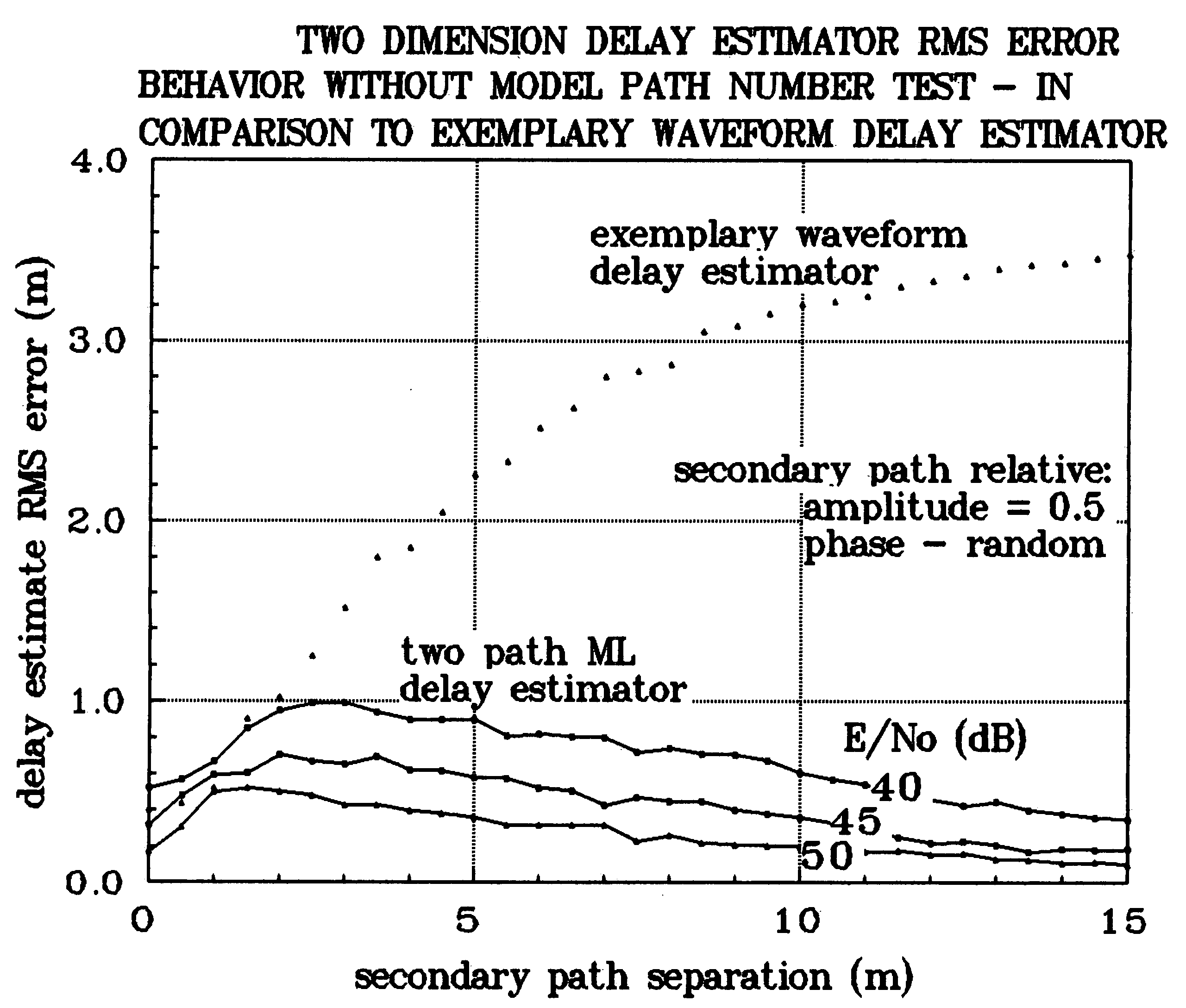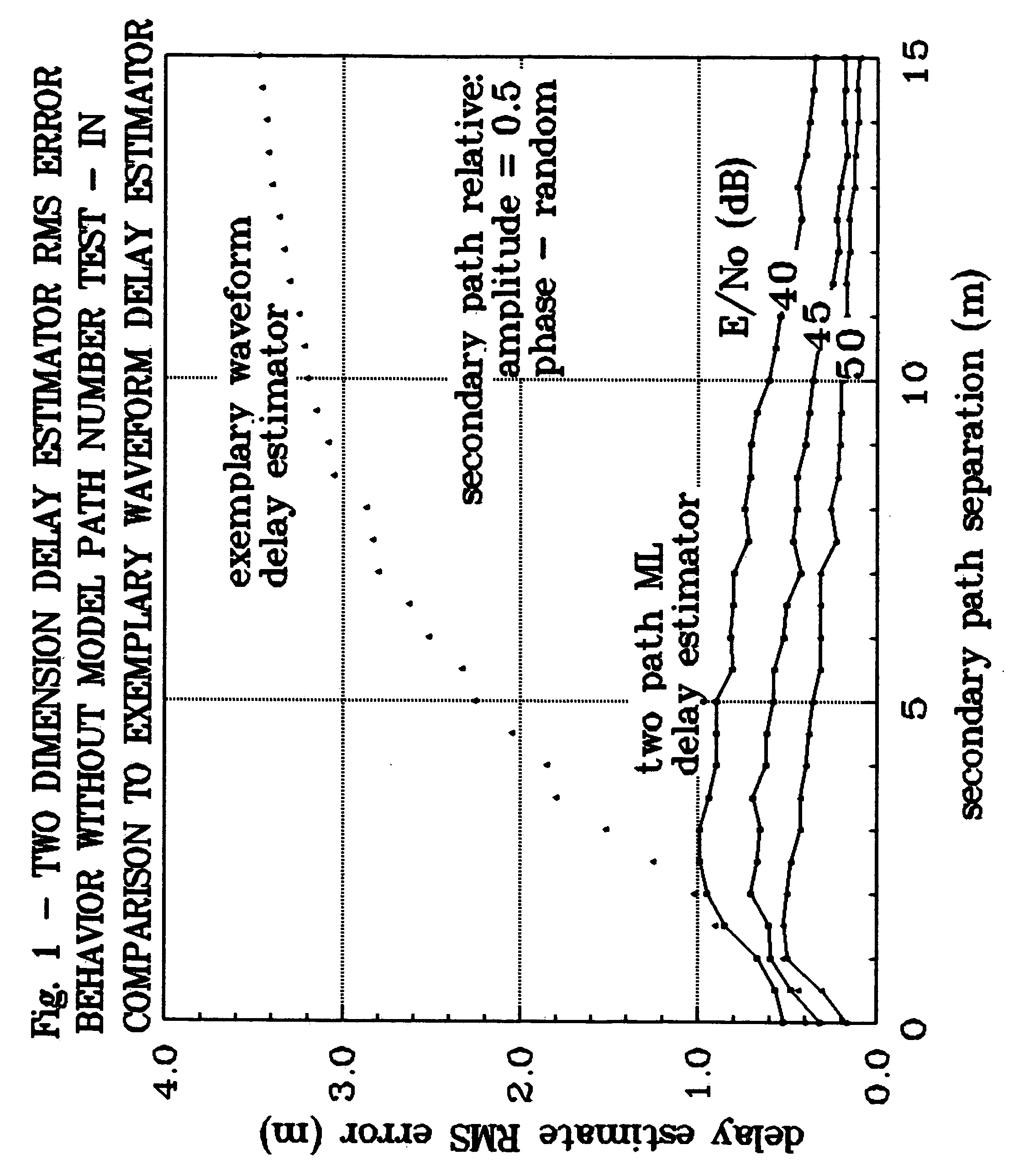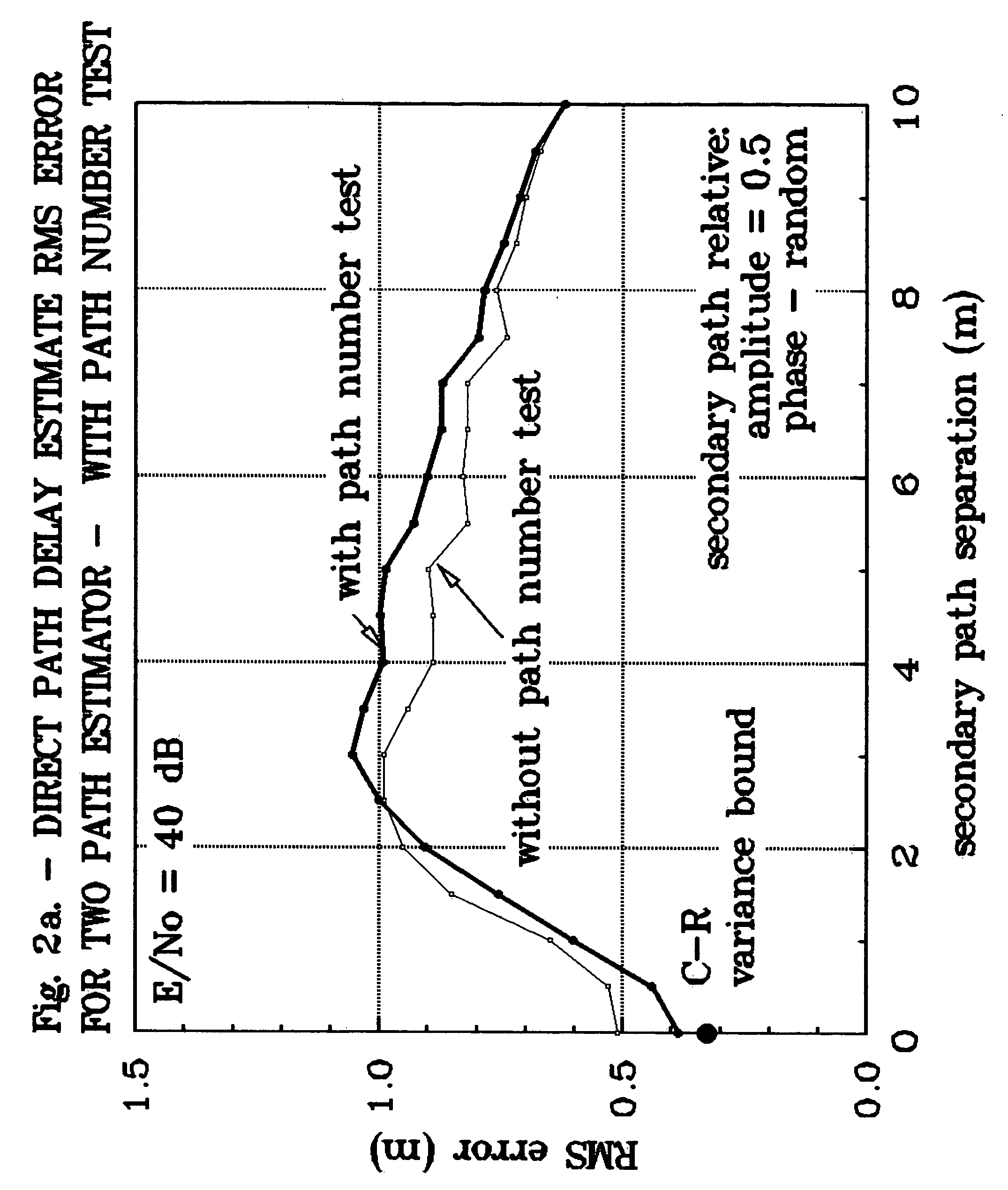Method for improving multipath mitigator low path separation error behavior
- Summary
- Abstract
- Description
- Claims
- Application Information
AI Technical Summary
Benefits of technology
Problems solved by technology
Method used
Image
Examples
Embodiment Construction
Signal Receivers
[0019] In the ranging systems' signal receivers contemplated here the received RF (radio frequency or sonic or light frequency) signal is most commonly translated to base-band to obtain a signal with no carrier component. This is done in the interest of minimizing the signal sampling rate needed to preserve the range bearing information carried by the signal envelope. At base-band the received signal r(t) can be written as a composite of the direct and secondary path signal components as r(t)=∑i=1IAim(t-τi)ⅇjϑi+n(t);t0≤t≤t0+T0,(1)
where Ai denotes the amplitude of the ith=1, . . . , I signal component of the composite received signal, m(t) denotes the signal modulation which is common to all signal components, τi denotes the delay of the ith=1, . . . , I signal component, φi denotes the carrier phase of the ith=1, . . . ,I signal component, generally considered randomly varying over [0, 2π], and T0 denotes the duration of signal observation. In eq. (1) the v...
PUM
 Login to View More
Login to View More Abstract
Description
Claims
Application Information
 Login to View More
Login to View More - R&D
- Intellectual Property
- Life Sciences
- Materials
- Tech Scout
- Unparalleled Data Quality
- Higher Quality Content
- 60% Fewer Hallucinations
Browse by: Latest US Patents, China's latest patents, Technical Efficacy Thesaurus, Application Domain, Technology Topic, Popular Technical Reports.
© 2025 PatSnap. All rights reserved.Legal|Privacy policy|Modern Slavery Act Transparency Statement|Sitemap|About US| Contact US: help@patsnap.com



